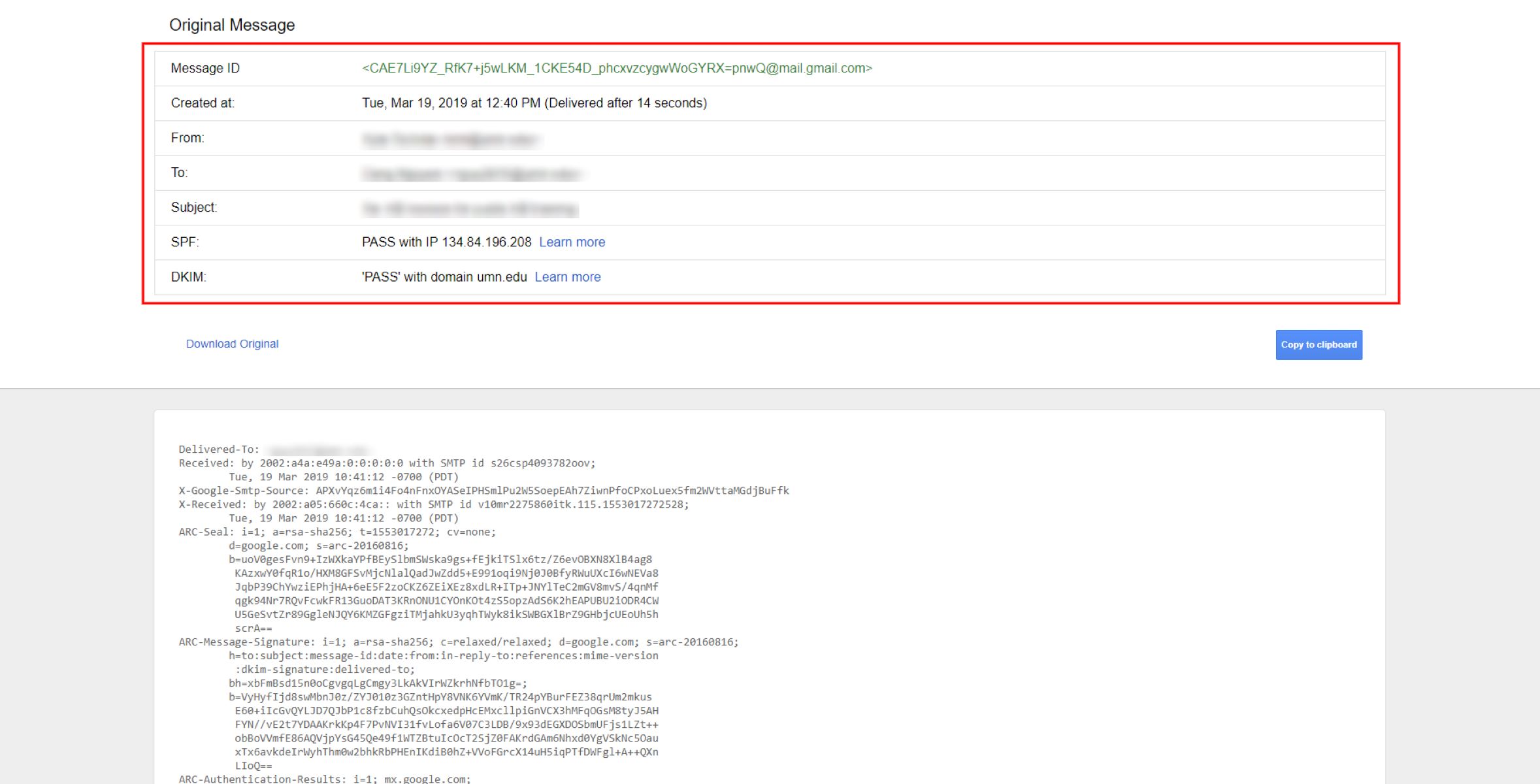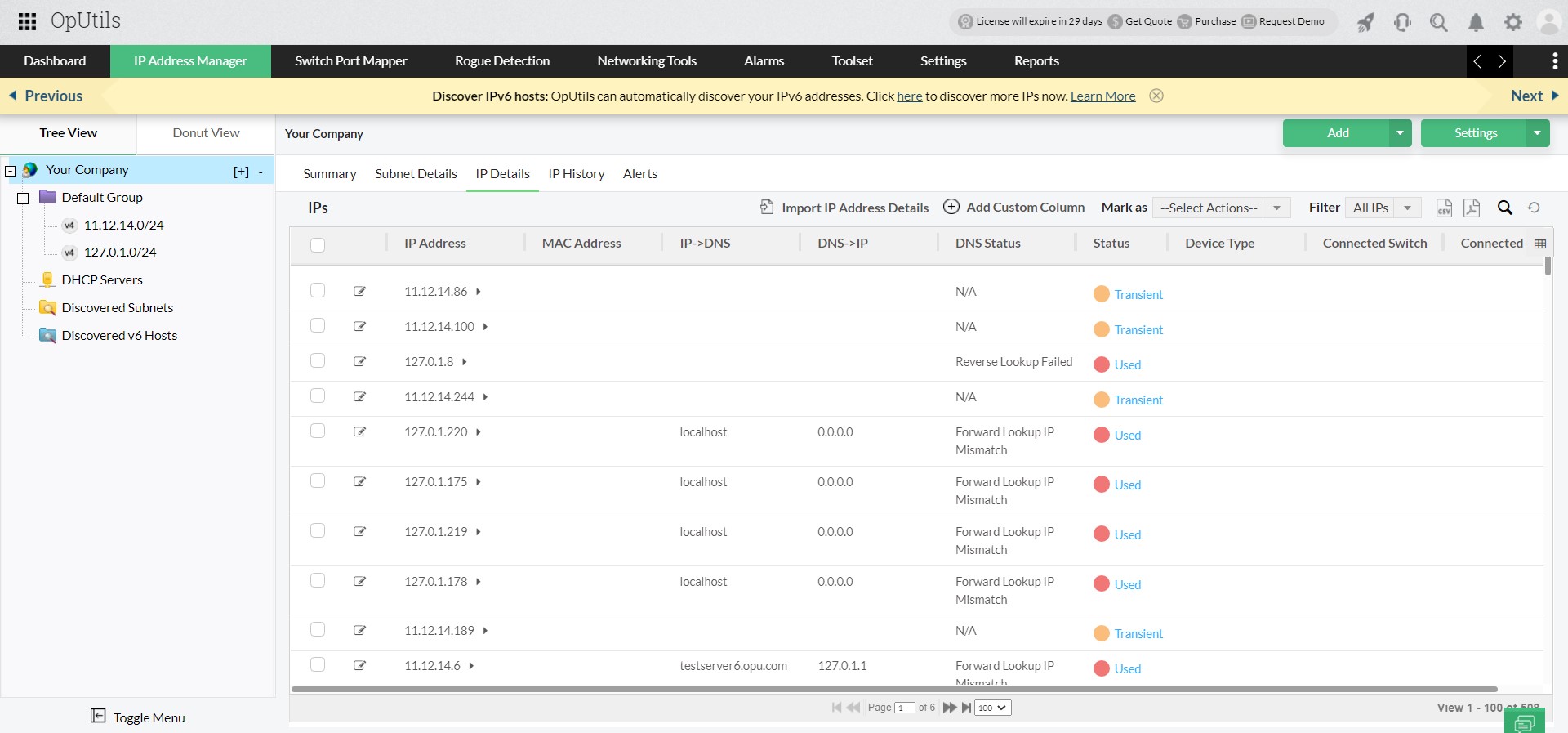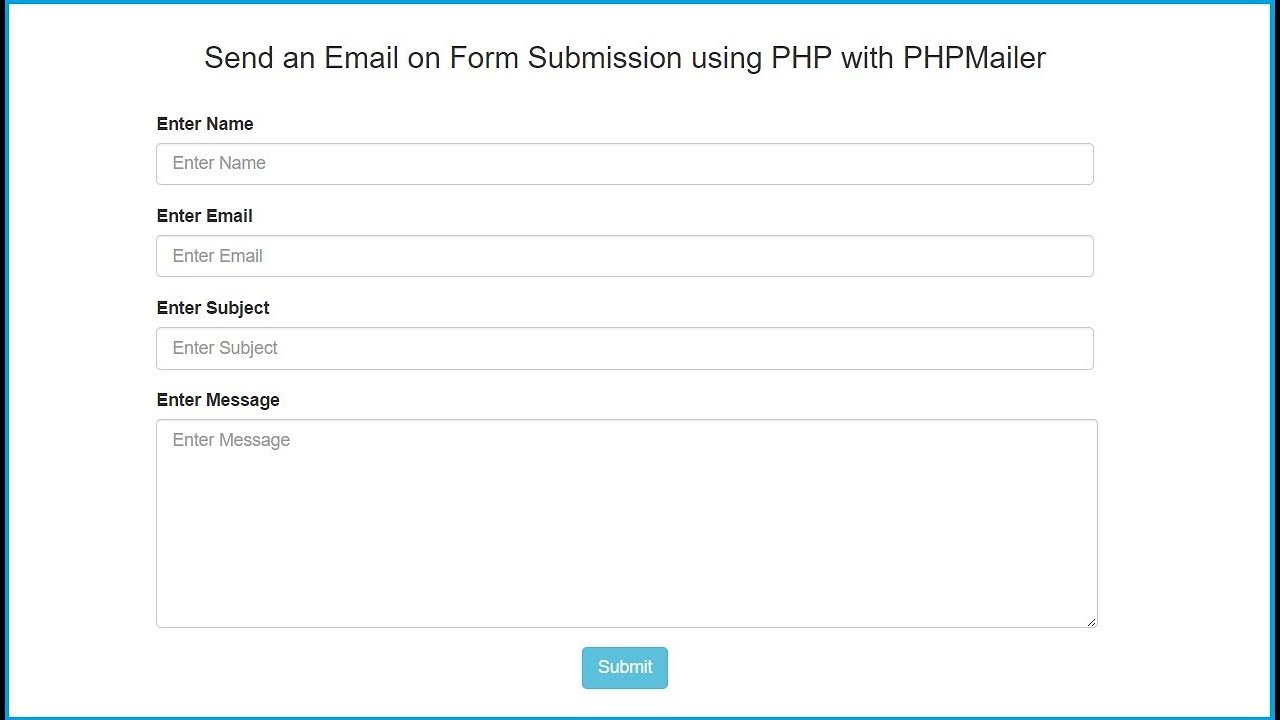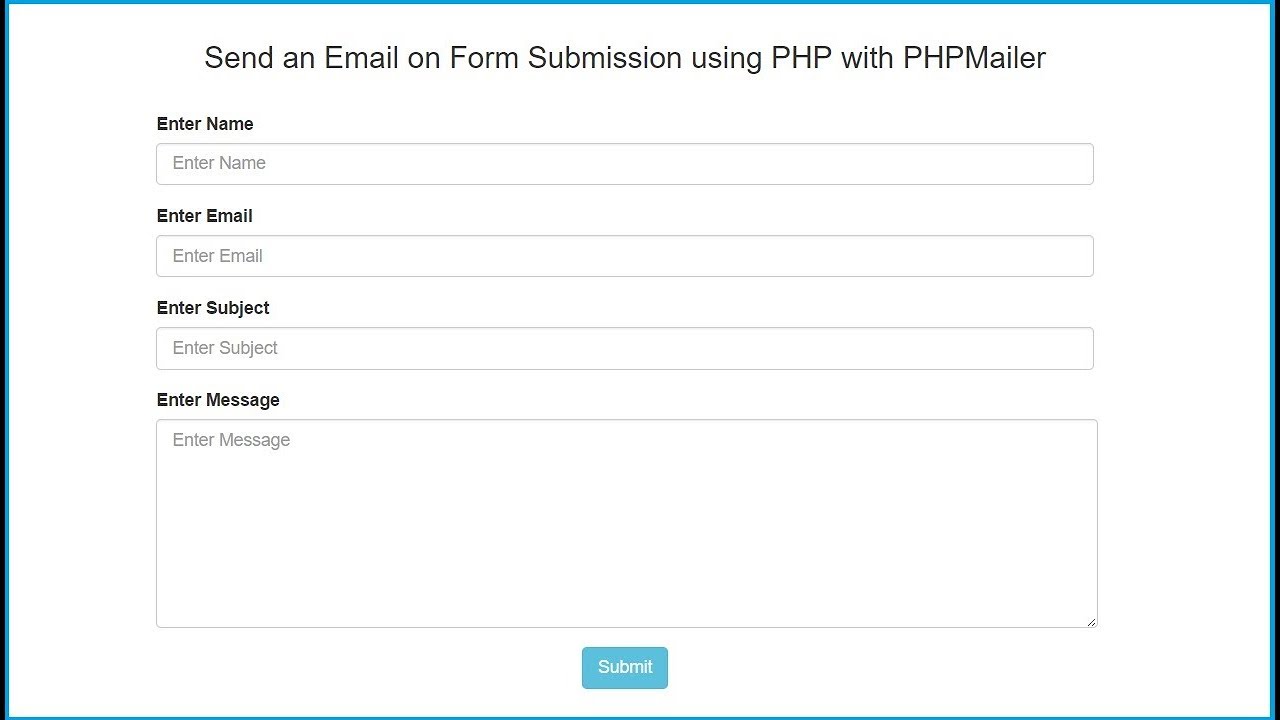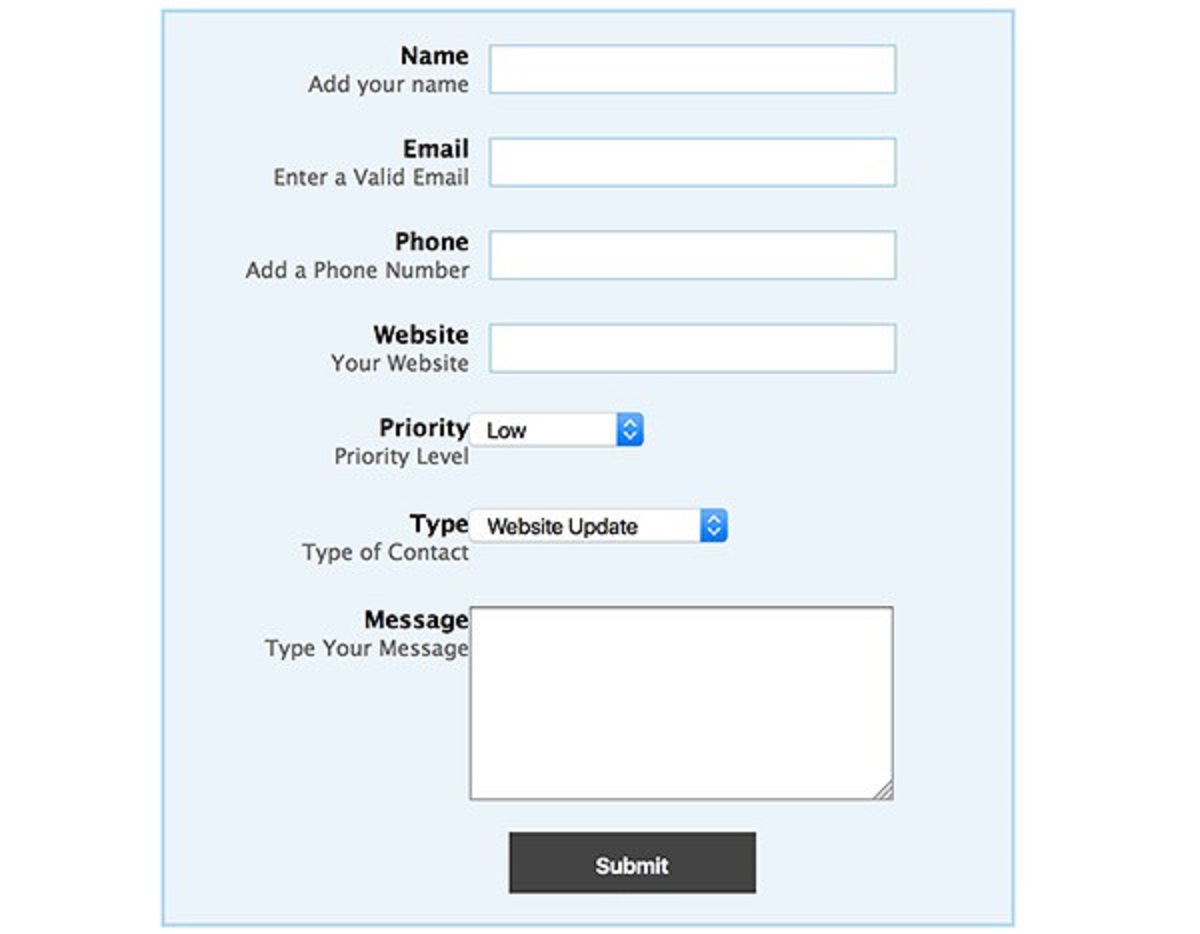Introduction
Welcome to this informative guide on email headers. In the digital age, email has become an essential means of communication for individuals and businesses alike. But have you ever wondered what happens behind the scenes when you send or receive an email? That’s where email headers come into play. Understanding email headers is important for ensuring the security, authenticity, and deliverability of your emails.
An email header is an integral part of every email you send or receive. It contains vital metadata and technical information about the email, including the sender and recipient details, subject line, time stamp, and much more. Email headers are not visible to the average email user, as they are usually obscured in the background of email clients. However, they play a crucial role in the proper functioning of email communication.
So, why are email headers important? Firstly, they help in identifying the origins of an email and verifying its authenticity. This is particularly crucial in today’s age of phishing scams and email spoofing. By analyzing the email header, you can determine if the email is from a legitimate source or if it has been tampered with.
Furthermore, email headers provide valuable information for troubleshooting email delivery issues. If you are experiencing problems with email delivery, examining the email header can give you insights into the server path and delivery status of your message. This information can help you pinpoint the issue and take necessary actions to resolve it.
Understanding the anatomy of an email header is essential in deciphering the various pieces of information it contains. The email header usually consists of multiple fields, each serving a specific purpose. Some of the key components include the “From” field, “To” field, “Subject” field, “Date” field, and more. To fully comprehend email headers, it is important to understand the significance of each field and the information it provides.
Definition of Email Header
An email header is a section of an email that contains important metadata and technical details about the message. It is a crucial component of the email structure and is hidden from the average email user. The header typically appears at the top of the email and is invisible in most email clients or requires specific actions to access. Its primary function is to provide information about the sender, recipient, subject line, date and time of the email, along with technical details about the servers and transmission path used to deliver the message.
The email header acts like an envelope that contains essential information necessary for the proper routing and delivery of the email. It includes details such as the IP addresses of the servers involved in the transmission, the route taken by the email, and any intermediate servers or relays that handled the message along the way.
Within the email header, various fields are used to display specific information. The “From” field indicates the email address of the sender, while the “To” field displays the address of the recipient. The “Subject” field provides a brief description of the email content, and the “Date” field shows the timestamp of when the email was sent.
Additionally, there are other optional header fields that can provide more detailed information. These may include the “Cc” field for carbon copy recipients, the “Bcc” field for blind carbon copy recipients, and the “Reply-To” field to specify an alternate address to which the recipient can reply.
Furthermore, the email header contains technical information related to the email’s transmission. This includes the “Received” field, which appears multiple times and shows the servers through which the email passed. Each “Received” field provides details about a specific server, such as its name, IP address, and timestamp.
Overall, the email header serves as a vital source of information for both users and email service providers. It ensures the proper delivery of emails, helps in identifying spam or malicious messages, and assists in troubleshooting email delivery issues.
Importance of Email Headers
Email headers play a significant role in the world of email communication. Although they are often overlooked or unseen by the average user, they hold immense importance in ensuring the security, authenticity, and proper delivery of emails.
One of the primary reasons why email headers are important is their role in identifying the origins and authenticity of an email. In today’s digital landscape, where phishing scams and email spoofing are prevalent, it is crucial to verify the legitimacy of received emails. By examining the email header, users can scrutinize various details such as the IP address and server information, which can provide critical insights into the email’s origin and help identify potential fraudulent or malicious messages.
Moreover, email headers are essential for troubleshooting and resolving email delivery issues. When an email fails to reach its intended recipient, understanding the information within the email header can often help pinpoint the problem. By analyzing the server path and delivery status indicated in the email header, users can identify any bottlenecks, misconfigurations, or technical errors that might be hindering successful email delivery. This enables them to take appropriate actions and rectify the issue promptly.
In addition to security and troubleshooting, email headers also provide valuable information for email tracking and compliance. Organizations often use email headers to track the flow of email communication within their networks, ensuring compliance with company policies and legal regulations. Email headers can help in determining delivery times, message routing, and even provide evidence of communication in legal or contractual disputes.
Furthermore, email headers are crucial for maintaining an efficient and reliable email infrastructure. Email service providers and network administrators rely on the information within the headers to monitor and optimize email delivery. By analyzing the header information, they can identify potential vulnerabilities, detect and mitigate spam or spoofed emails, and ensure the smooth functioning of the email ecosystem.
Overall, understanding the importance of email headers is essential for both email users and service providers. By recognizing the role they play in ensuring security, troubleshooting, compliance, and reliable email delivery, users can make more informed decisions and take appropriate actions to enhance their email experience.
Anatomy of an Email Header
To fully comprehend the workings of an email header, it is essential to understand its anatomy. An email header consists of several key components that provide valuable information about the email and its transmission process. Let’s dive into the different elements of an email header:
From: The “From” field in the email header displays the email address of the sender. It indicates who the email is originating from and allows the recipient to identify the sender.
To: The “To” field shows the email address(es) of the recipient(s). It specifies the intended recipient(s) of the email and is crucial for proper delivery.
Subject: The “Subject” field provides a brief description of the email’s content. It allows recipients to quickly grasp the purpose or topic of the email without opening it.
Date: The “Date” field indicates the timestamp of when the email was sent. It helps in organizing and sorting emails based on their chronology.
Reply-To: The “Reply-To” field allows the sender to specify an alternate email address to which the recipient should reply if different from the “From” address.
CC: The “CC” field (Carbon Copy) allows the sender to include additional recipients who will receive a copy of the email. The email addresses in this field are visible to all recipients.
BCC: The “BCC” field (Blind Carbon Copy) is similar to the “CC” field, but the email addresses listed here are hidden from other recipients. It allows the sender to send a copy of the email to additional recipients without revealing their identities to others.
Received: The “Received” field appears multiple times within the email header. Each “Received” field contains information about the servers and relays involved in the transmission of the email. It lists the IP address or domain name of each server, along with a timestamp, indicating the route the email took from sender to recipient.
MIME-Version: The “MIME-Version” field indicates the version of Multipurpose Internet Mail Extensions (MIME) used in the email. MIME allows for the inclusion of non-text content, such as attachments or HTML formatting, in the email.
Content-Type: The “Content-Type” field specifies the type of content in the email, such as plain text, HTML, or attachments. It helps the recipient’s email client determine how to display or handle the email.
Message-ID: The “Message-ID” field is a unique identifier assigned to each email. It allows email clients and servers to keep track of individual messages and facilitates threading or organizing of email conversations.
By understanding the anatomy of an email header and the role each element plays, users can gain valuable insights into the email’s origin, content, and transmission path. Analyzing these header components can assist in identifying potential issues, ensuring email security, and troubleshooting delivery problems.
Key Components of Email Headers
Email headers are made up of several key components that provide essential information about the email and its transmission. Understanding these components is crucial for analyzing email headers and extracting valuable insights. Let’s explore the key components of email headers:
From: The “From” field displays the email address of the sender. It helps recipients identify the sender and serves as a point of contact for replies or further communication.
To: The “To” field contains the email address(es) of the recipient(s). It specifies who the email is intended for and plays a vital role in delivering the email to the correct destination.
Subject: The “Subject” field provides a brief description or summary of the email’s content. It gives recipients an idea of what the email is about and helps them prioritize and organize their inbox.
Date: The “Date” field indicates the timestamp of when the email was sent. It helps users keep track of email conversations and ensures messages are viewed in the correct chronological order.
Reply-To: The “Reply-To” field allows the sender to specify an alternate email address to which recipients should reply. It is useful when the sender wants replies to be directed to another email account or department within an organization.
CC: The “CC” field (Carbon Copy) allows the sender to include additional recipients who will receive a copy of the email. The email addresses in this field are visible to all recipients, and it is commonly used when keeping others informed or involved in the conversation.
BCC: The “BCC” field (Blind Carbon Copy) functions similarly to the “CC” field but with a crucial difference. Email addresses listed in the “BCC” field are hidden from other recipients, maintaining their confidentiality. It is often used when sending mass emails or when the sender wants to protect the privacy of certain recipients.
Received: The “Received” field appears multiple times in an email header and provides information about the servers or relays that handled the email during its transmission. Each “Received” field includes the IP address or domain name of the server, along with a timestamp. Analyzing these fields can help trace the path the email took and identify any issues or delays in delivery.
MIME-Version: The “MIME-Version” field indicates the version of the Multipurpose Internet Mail Extensions (MIME) protocol used in the email. MIME allows for the inclusion of non-text content, such as attachments or HTML formatting, in the email. This field ensures compatibility and proper rendering of the email content in different email clients.
Content-Type: The “Content-Type” field specifies the type of content within the email, such as plain text, HTML, or attachments. It helps email clients interpret and display the email correctly. For example, an HTML email will be rendered as a visually appealing email with images and formatting, while a plain text email will appear as simple text.
Message-ID: The “Message-ID” field is a unique identifier assigned to each email. It serves as a reference point for email clients and servers to track and organize individual messages. The Message-ID field is particularly useful in email threading, where it helps group related emails together in a conversation.
By understanding these key components of email headers, users can gain valuable insights into the sender, recipient, subject, date, and other crucial aspects of the email. Analyzing these components allows for better understanding, organization, and troubleshooting of email communication.
Importance of Email Header Information
The information contained in email headers holds significant importance in various aspects of email communication. Understanding and analyzing this information is crucial for ensuring the security, authenticity, and proper functioning of emails. Let’s explore the importance of email header information:
Email Verification and Security: Email headers play a vital role in verifying the authenticity of emails and detecting potential security threats. By examining the header information, users can identify the sender’s IP address, domain, and other details that help validate the source of the email. This verification process helps avoid falling victim to phishing scams, email spoofing, or other malicious activities.
Tracking and Tracing Emails: Email headers provide valuable information for tracking and tracing the flow of emails. By analyzing the server routes indicated in the header, users can identify the path an email took, including intermediate servers and relays. This information can be useful in determining the delivery status, identifying potential delays or bottlenecks, and tracking the history of email communication within an organization.
Identifying Spam and Filtering: Email headers contain information that is crucial for identifying and filtering out spam emails. Anti-spam filters often analyze header fields, such as the source IP address, domain reputation, and other indicators of suspicious or unsolicited emails. By examining these header components, users can better distinguish legitimate emails from spam and reduce the risk of falling prey to scams or malware.
Troubleshooting Email Delivery Issues: Sometimes, emails may fail to reach their intended recipients due to various issues. Email header information is invaluable for troubleshooting these delivery problems. The “Received” fields in the header provide a traceable path that shows the servers involved in the transmission and any potential errors or delays encountered along the way. By analyzing this information, users can identify the specific point of failure and take appropriate actions to resolve the issue.
Email Compliance and Archiving: Organizations often have legal and regulatory requirements for email compliance and archiving. Email headers play a crucial role in this aspect by providing valuable information related to the sender, recipient, date, and other metadata. This information helps in the proper labeling, indexing, and storage of emails to meet legal requirements and facilitate quick retrieval of emails, if necessary, for future reference.
Email Client Configuration and Rendering: The information within email headers, such as the content-type and MIME-Version fields, ensures proper configuration and rendering of emails in email clients. Email clients rely on this information to determine how to display the email, whether as plain text, HTML, or with attachments. Accurate interpretation of the email header information helps ensure that the email is correctly rendered and displayed to the recipient as intended.
Overall, the information contained within email headers is vital for verifying authenticity, tracking, troubleshooting, filtering spam, complying with regulations, and ensuring proper email delivery. By understanding and leveraging this information, users can enhance the security, reliability, and efficiency of their email communication.
How to View Email Headers
Viewing email headers allows users to access the valuable information contained within and analyze its details. Although email headers are typically hidden from the average email user, they can be accessed through various methods depending on the email client or service being used. Here are a few common methods for viewing email headers:
Email Clients: Most email clients provide an option to view email headers. To access this information, users can typically open the email in question and look for an option or menu that allows them to view the full email headers. In popular email clients like Gmail, Outlook, or Thunderbird, this option can usually be found under the “More” or “Options” menu. Clicking on this option will expand the email header and display all the relevant information.
Webmail Services: For web-based email services, such as Gmail or Outlook.com, users can access email headers by opening the email and finding the option to view the email details. The location of this option may vary, but it is often denoted by an arrow or dropdown icon next to the sender’s name or email address. Clicking on this icon or option will display a popup or page with the email header information.
Keyboard Shortcuts: Some email clients and webmail services offer keyboard shortcuts to directly view the email headers. These shortcuts can vary between email platforms, but commonly involve pressing a combination of keys, such as “Ctrl+U” or “Command+Shift+H”. Users should refer to their email client’s documentation or search the internet for the specific keyboard shortcut to view headers in their chosen email program.
Third-Party Email Tools: There are also dedicated third-party tools and browser extensions available that can extract and display email headers. These tools often provide additional functionalities such as header analysis, spam identification, or header visualization. Users who require more advanced header analysis or want a specialized tool for viewing headers can explore these options.
Once users have accessed the email header, they can examine the various fields and their respective values. This includes information such as the sender’s email address and IP, the recipient’s email address, the date and time of the email, the servers involved in the transmission, and any additional details that provide insight into the email’s journey. Analyzing this information can help users validate the authenticity of the email, troubleshoot delivery issues, or identify potential security concerns.
It is important to note that the process of viewing email headers may vary depending on the email client or service being used. Users are encouraged to refer to the specific documentation or support resources for their chosen email platform to find the most accurate instructions for accessing and viewing email headers.
Understanding Email Header Information
Once you have accessed the email header, understanding the information it contains is essential for gaining insights into the email’s origin, transmission, and other relevant details. Email headers contain various fields and values that provide valuable information. Here is a breakdown of some key fields and what they signify:
From: The “From” field indicates the email address of the sender. It helps identify the source of the email and who it is coming from.
To: The “To” field displays the email address(es) of the recipient(s). It specifies the intended recipient(s) of the email.
Subject: The “Subject” field provides a brief description or summary of the email’s content. It gives recipients an idea of what the email is about.
Date: The “Date” field indicates the timestamp of when the email was sent. It helps track the timing and sequence of email communication.
Reply-To: The “Reply-To” field allows the sender to specify an alternate email address to which recipients should reply, if different from the “From” address.
CC: The “CC” field (Carbon Copy) lists email addresses of additional recipients who receive a copy of the email. The addresses in this field are visible to all recipients.
BCC: The “BCC” field (Blind Carbon Copy) functions like the “CC” field but keeps the email addresses hidden from other recipients, ensuring privacy.
Received: The “Received” field appears multiple times and provides information about the servers involved in the email’s transmission. Each “Received” field shows the IP address or domain name of a server, as well as timestamps. Analyzing these fields helps trace the email’s path and troubleshoot delivery issues.
MIME-Version: The “MIME-Version” field indicates the version of Multipurpose Internet Mail Extensions (MIME) used in the email. MIME enables the inclusion of non-text content such as attachments, images, or rich formatting.
Content-Type: The “Content-Type” field specifies the type of content within the email, such as plain text, HTML, or attachments. It helps email clients interpret and display the email correctly.
Message-ID: The “Message-ID” field is a unique identifier assigned to each email. It helps identify and organize individual messages, particularly in email threading or conversation view.
By understanding these key fields and their significance, users can gain valuable insights into the email’s origin, recipients, subject, and other relevant information. Analyzing the “Received” fields helps trace the email’s path and identify any potential delivery issues. Examining the “MIME-Version” and “Content-Type” fields helps determine how the email’s content is displayed. The “Message-ID” field assists in organizing emails within a conversation.
Moreover, email headers may include additional fields depending on the email client or service used. These fields can provide further details on the email’s routing, security features, or other information specific to the email platform.
Understanding email header information empowers users to verify email authenticity, troubleshoot delivery issues, and ensure proper interpretation of the email’s content. It plays a pivotal role in email communication, aiding in security, efficiency, and successful message delivery.
Common Email Header Fields
Email headers consist of various fields that provide important information about the email and its transmission. While email headers can contain numerous fields, some are more commonly seen than others. Here are some of the common email header fields and their significance:
From: The “From” field indicates the email address of the sender. It helps identify the source of the email and provides recipients with the information needed to reply or establish contact.
To: The “To” field displays the email address(es) of the recipient(s). It specifies the intended recipient(s) of the email, ensuring that it reaches the appropriate individuals or groups.
Subject: The “Subject” field provides a brief description or summary of the email’s content. It allows recipients to quickly understand the purpose or topic of the email without having to open it.
Date: The “Date” field indicates the timestamp of when the email was sent. It helps in organizing email conversations chronologically and provides context for the timing of the message.
Reply-To: The “Reply-To” field allows the sender to specify an alternate email address to which recipients should reply if different from the “From” address. This field enables the sender to direct replies to a different email account or department.
CC: The “CC” field (Carbon Copy) lists the email addresses of additional recipients who receive a copy of the email. The email addresses in this field are visible to all recipients, allowing them to know who else received the email.
BCC: The “BCC” field (Blind Carbon Copy) functions like the “CC” field, but the email addresses listed here are hidden from other recipients. This feature provides privacy to the additional recipients, as their identities remain undisclosed.
Received: The “Received” field appears several times in an email header, each representing a server or relay that handled the email’s transmission. These fields provide valuable information about the route the email took from sender to recipient, including server names, IP addresses, and timestamps.
MIME-Version: The “MIME-Version” field indicates the version of Multipurpose Internet Mail Extensions (MIME) used in the email. MIME allows for the inclusion of non-text content, such as attachments or HTML formatting, within the email.
Content-Type: The “Content-Type” field specifies the type of content within the email, such as plain text, HTML, or attachments. It helps email clients interpret and display the email correctly based on its content type.
Message-ID: The “Message-ID” field is a unique identifier assigned to each email. It serves as a reference point for email clients and servers to track and organize individual messages. This field is especially useful for email threading, as it helps group related emails together in a conversation.
While these are commonly seen email header fields, it is important to note that email headers can include additional fields based on specific email clients, services, or purposes. These additional fields may provide further details about encryption, priority, spam filtering, and more, depending on the email platform being used.
Understanding these common email header fields enables users to extract valuable information about the sender, recipient, subject, and routing of the email. Analyzing these fields assists in verifying email authenticity, managing email conversations, and organizing email content more effectively.
How to Analyze Email Headers
Analyzing email headers is a crucial skill for understanding the origin, path, and technical details of an email. By examining the information within the headers, users can gain valuable insights into the authenticity, security, and delivery of the email. Here are steps to help you analyze email headers effectively:
Step 1: Access the Email Headers: Depending on your email client or service, you’ll need to access the email header information. This can typically be done by opening the email and finding an option to view the full headers. Look for options like “View Full Headers,” “Show Original,” or “Message Source.” Clicking on this option will display the complete header information.
Step 2: Examine the “Received” Fields: The “Received” fields provide vital information about the servers involved in the email’s transmission. Start by analyzing the last “Received” field which represents the server closest to you. Look at the IP address, domain name, and timestamp to understand the server that initially received the email.
Step 3: Trace the Server Path: Move backward through the “Received” fields, examining each one to trace the path the email took from sender to recipient. Analyze the server information within each field, including IP addresses, timestamps, and server names. This helps identify the route the email followed, any relays or intermediate servers involved, and can highlight any delays or issues encountered along the way.
Step 4: Validate Sender Information: Examine the “From” field to verify the authenticity of the sender. Look for the email address and compare it to known sender information. Cross-reference the domain and IP address mentioned in the “Received” fields to ensure they align with the sender’s claimed information.
Step 5: Analyze Other Header Fields: Pay attention to other critical header fields such as “To,” “Subject,” “Date,” and “Reply-To.” These fields provide context and additional details about the email. Check for any irregularities, misspellings, or suspicious details that may indicate potential issues or malicious activity.
Step 6: Consider Security Measures: Look for header fields related to security measures, such as “DKIM” (DomainKeys Identified Mail) or “SPF” (Sender Policy Framework) signatures. These fields provide additional verification that the email originates from the claimed sender and has not been tampered with.
Step 7: Assess Email Content-Type: Review the “Content-Type” field to determine the type of content within the email, such as plain text, HTML, or attachments. Ensure the content is displayed correctly and matches what you expected to receive.
Step 8: Compare with Known Information: Compare the information in the email headers with what you know about the sender, previous correspondence, or expected email behavior. Look for any discrepancies, anomalies, or red flags that may signify a potential security issue or fraud attempt.
By following these steps and carefully examining the email header information, you can gain valuable insights into the email’s origin, transmission, and security. Analyzing email headers helps in verifying the authenticity of the sender, understanding the delivery path, and detecting potential security threats. It is an essential skill for ensuring email security and building trust in digital communications.
Importance of Email Header Analysis
Email header analysis plays a significant role in ensuring the security, authenticity, and proper functioning of emails. By thoroughly examining the information within email headers, users can gain valuable insights that aid in verifying the origins of an email, troubleshooting delivery issues, and detecting potential security threats. Here are some reasons highlighting the importance of email header analysis:
Verification of Email Authenticity: Email header analysis enables users to validate the authenticity of an email. By examining the header fields, such as the “From” field and the “Received” fields, users can verify the sender’s information, including the domain, IP address, and the servers involved in the email’s transmission. This verification process helps in identifying phishing attempts, email spoofing, or other forms of fraudulent activities that may harm individuals or organizations.
Identification of Email Spoofing and Phishing Attempts: Email spoofing occurs when a malicious sender disguises their email to appear as if it originates from a trusted source. Email header analysis allows users to scrutinize the sender’s information and detect any signs of spoofing. This analysis also helps identify phishing attempts by examining the header fields for suspicious URLs, unexpected domains, or inconsistencies between the sender information and the email’s actual source.
Troubleshooting Email Delivery Issues: When faced with email delivery delays or issues, email header analysis provides crucial insights for troubleshooting. By examining the “Received” fields, users can trace the path the email traveled through various servers and identify any potential bottlenecks or errors that could be hindering successful delivery. Analyzing the header fields also helps determine specifics such as timestamps, server names, and IP addresses, which assist in locating potential points of failure or delays.
Prevention of Malware and Spam: Email header analysis aids in identifying potential spam or malware-infected emails. By examining header fields such as authentication methods like DKIM (DomainKeys Identified Mail) or SPF (Sender Policy Framework), users can verify the legitimacy of emails from known senders or organizations. Suspicious or unauthorized header information can also be a warning sign of potential malware or spam content, allowing users to take appropriate precautions and protect their systems.
Enhancement of Email Security Measures: Email header analysis helps organizations and individuals enhance their overall email security. By understanding the information within the headers, users can evaluate the effectiveness of their existing security measures such as SPF, DKIM, or DMARC (Domain-based Message Authentication, Reporting, and Conformance). This analysis allows for the identification of potential gaps or vulnerabilities in security protocols and the implementation of additional measures to strengthen email security.
Building Trust in Digital Communications: Email header analysis promotes trust in email communications. By demonstrating a strong understanding of email headers and consistently analyzing them for authenticity and security, users can build confidence in their ability to identify potential threats and ensure secure communication. This builds trust both within organizations and in external communication with clients, partners, or customers.
Overall, email header analysis plays a pivotal role in email security, authenticity verification, troubleshooting delivery issues, and reducing the risks associated with fraud or phishing attempts. By consistently analyzing email headers, users can strengthen their email communication practices and enhance the overall security of their digital interactions.
Tools for Analyzing Email Headers
Analyzing email headers can be greatly facilitated by using specialized tools designed to extract and interpret the information within them. These tools provide valuable insights, enhance efficiency, and aid in understanding the complexities of email headers. Here are some commonly used tools for analyzing email headers:
Email Header Analyzer: Email header analyzer tools are specifically designed to process and interpret the information within email headers. They extract and present the header fields in a user-friendly format, making it easier to analyze and understand. These tools often provide additional features such as highlighting suspicious elements, identifying potential risks, and offering insights on the email’s authenticity and delivery path.
Online Header Analysis Services: Online header analysis services allow users to upload email headers for analysis. These services analyze the headers and provide detailed reports on various aspects, including sender verification, IP reputation checks, SPF and DKIM authentication, delivery path analysis, and spam scoring. These services are particularly useful for users who do not have access to specialized email client features for header analysis.
Command Line Tools: Advanced users or system administrators can utilize command line tools to analyze email headers. Tools like “grep” or “awk” can be used to extract specific header fields or filter out relevant information. These command line tools enable customized analysis and can be incorporated into automated scripts or processes.
Email Forensics Tools: Email forensics tools are primarily used for investigating email-related incidents or disputes. These tools offer advanced capabilities for analyzing email headers, including the ability to trace email paths, identify geographical locations of servers, and extract forensic evidence from the headers. They are commonly used in legal investigations, cybersecurity incidents, or internal corporate investigations.
Email Gateway or Security Solutions: Many email gateway or security solutions include built-in features for analyzing email headers. These solutions often provide detailed logs and reports that allow administrators to analyze header information related to delivery, spam detection, malware filtering, and more. By leveraging these built-in features, administrators can obtain valuable insights and proactively manage email security and delivery issues.
Network Monitoring and Analysis Tools: Network monitoring and analysis tools can also be helpful in analyzing email headers. These tools allow administrators to monitor and capture network traffic. By capturing the network packets containing email traffic, they can examine the headers and gain insights into the email’s transmission path, server information, and potential issues affecting delivery.
It is important to choose the appropriate tool based on your specific needs and level of expertise. Some tools are user-friendly and intuitive, while others require more advanced technical knowledge. Consider factors such as functionality, ease of use, reporting capabilities, and compatibility with your email infrastructure when selecting an email header analysis tool.
Remember, regardless of the tool used, the primary goal is to extract and interpret the valuable information contained within email headers. These tools significantly streamline the analysis process, improve efficiency, and provide insights that enhance security, troubleshooting, and overall understanding of email communication.
Conclusion
Email headers are often overlooked, but they hold a wealth of valuable information that is crucial for verifying the authenticity, understanding the delivery path, and troubleshooting email communication. By analyzing email headers, users can better protect themselves from phishing attempts, identify potential security threats, and ensure the proper delivery of emails. Understanding the key components of email headers, such as the “From,” “To,” and “Received” fields, enables users to extract relevant details about the sender, recipient, subject, and transmission path.
Email header analysis plays a vital role in email security, allowing users to detect email spoofing, phishing attempts, and potential malware threats. It aids in verifying the authenticity of emails, safeguarding against fraudulent activities, and building trust in digital communications. The ability to analyze email headers also helps in troubleshooting delivery issues by examining the timestamps, server information, and potential errors along the transmission path.
Various tools and techniques are available to perform email header analysis efficiently. From specialized email header analyzers and online analysis services to command line tools and network monitoring solutions, these tools assist in extracting and interpreting header information, enhancing security measures, and improving overall email communication processes.
Whether you are an individual user, a business, or an email service provider, understanding and analyzing email headers is essential. By recognizing the importance of email headers, learning how to view and analyze the information they contain, and leveraging appropriate tools, users can strengthen their email security, troubleshoot delivery issues effectively, and ensure smooth communication.
So, the next time you receive an email, remember to take a closer look at its header and uncover the valuable insights hidden within. By harnessing the power of email header analysis, you can enhance your email experience, safeguard against threats, and promote secure and reliable communication.







